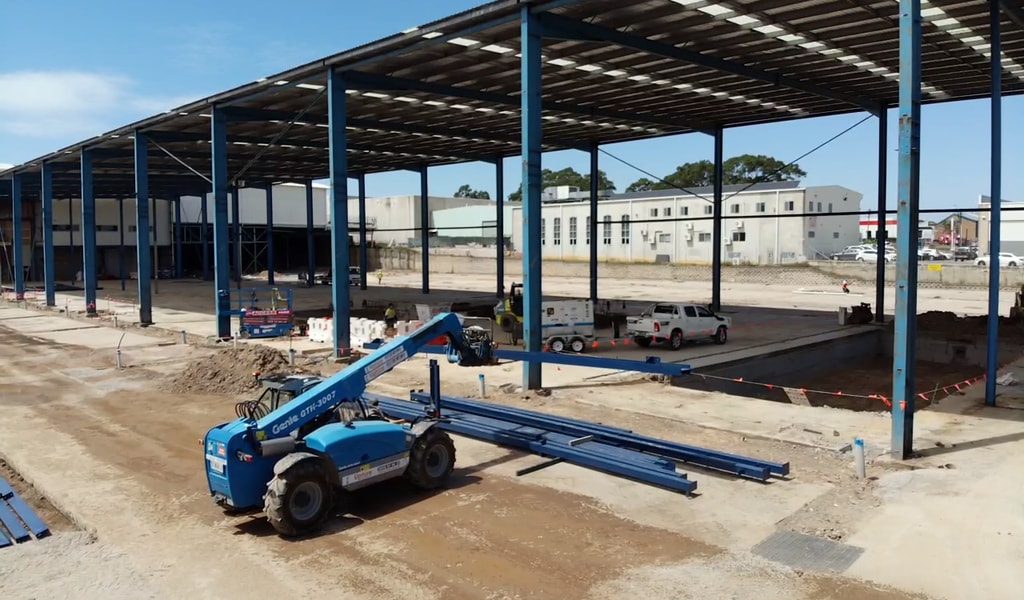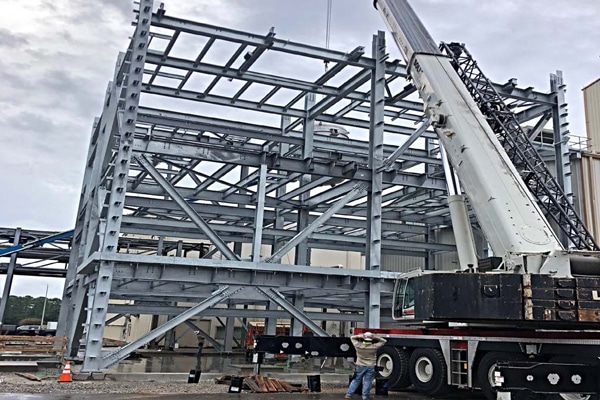The Ultimate Handbook on Personalized Steel Construction Solutions for Structural Projects
In the world of architectural jobs, the relevance of personalized steel manufacture remedies can not be overstated. From the fundamental understanding of steel manufacture essentials to the detailed procedure of selecting the most ideal products, every action in this trip plays an essential duty in the best success of a task.
Understanding Custom Steel Fabrication Basics
Exploring the fundamentals of customized steel fabrication offers understanding right into the elaborate process of transforming raw steel right into customized architectural elements. Personalized steel manufacture is a customized production strategy that entails cutting, shaping, and setting up steel products to produce distinct structures according to specific project needs. Recognizing the fundamentals of customized steel fabrication is essential for making certain the effective execution of structural tasks.
The procedure typically starts with the analysis of job specifications and layout requirements. This initial phase involves detailed preparation and partnership between designers, engineers, and makers to establish one of the most appropriate strategy for producing the steel components. Accuracy is key throughout the fabrication procedure, as even small deviations can affect the structural honesty of the end product.
Various methods, such as reducing, welding, and shaping, are employed to change raw steel into the preferred structural aspects. Skilled producers utilize sophisticated machinery and devices to guarantee precision and uniformity throughout the construction procedure. Quality assurance measures are applied to validate the integrity of the produced parts before they are put together on-site, making certain compliance with market requirements and task specifications.
Choosing the Right Steel Products

First and foremost, the kind of structural job and its particular requirements play a crucial duty in establishing one of the most suitable steel materials. Variables such as the load-bearing ability, environmental conditions, and wanted life expectancy of the framework will certainly dictate the quality and sort of steel that ought to be used.
In addition, the physical buildings of the steel, including ductility, weldability, and strength, have to line up with the project's demands to ensure optimal efficiency and toughness (steel fixing). Furthermore, considerations such as corrosion resistance, cost-effectiveness, and availability of the steel materials must also be thought about during the option process
Style Considerations for Structural Projects
Architectural tasks require precise focus to develop factors to consider to guarantee both capability and safety are focused on throughout the construction process. When it involves making architectural projects, numerous crucial elements need to be considered to guarantee the success of the undertaking. The structural stability of the structure have to be a top priority. This involves examining lots, stress and anxieties, and environmental elements to figure out one of the most ideal design that can endure different problems gradually. Furthermore, factors to consider for the capability of the framework play a crucial role in the design process. Comprehending the purpose of the building and how it will be utilized assists in producing a style that maximizes efficiency and usability. Including components that enhance the visual appeals of the structure can additionally boost the total layout. Balancing safety and security, performance, and aesthetic appeal is important in developing successful structural jobs that meet both sensible and visual requirements. By meticulously thinking about these aspects throughout the design stage, engineers and designers can continue reading this ensure the architectural project's success from conception to conclusion.
Improving Fabrication Procedures for Performance

Furthermore, applying lean manufacturing principles can substantially improve effectiveness in steel manufacture. By reducing waste, maximizing workflow, and improving interaction between various groups involved in the construction process, jobs can be finished a lot more promptly and with better criteria.
Furthermore, establishing an efficient production schedule and process can help in prioritizing tasks, designating sources efficiently, and conference project deadlines without delay. By having a clear plan in position and on a regular basis monitoring development, any kind of possible bottlenecks or delays can be determined and attended to without delay, ensuring smooth and efficient fabrication processes for structural projects.
Quality Control and Project Management in Steel Construction
To make sure the effective implementation of steel manufacture tasks, thorough quality assurance actions and reliable job administration methods are necessary elements in preserving precision and meeting customer expectations. Quality control in steel fabrication entails strenuous assessments at different phases of the fabrication process to validate conformity with task requirements and sector requirements. This includes material screening, dimensional checks, and weld examinations to make sure structural integrity and safety.
Task administration plays an important function in coordinating the numerous facets of steel manufacture jobs, such as organizing, resource appropriation, and interaction among employee. A well-defined project strategy with clear goals, turning points, and timelines aids to keep track of development and address any prospective problems proactively. Reliable interaction between all stakeholders, consisting of customers, specialists, makers, and engineers, is crucial for ensuring that the job proceeds smoothly and satisfies the wanted quality requirements.
Verdict
To conclude, custom-made steel manufacture plays an essential function in architectural tasks by providing tailored options making use of the right materials and style factors to consider. Performance in manufacture processes, quality control, and efficient job monitoring are essential for successful outcomes. By comprehending the fundamentals of custom-made steel manufacture and applying structured procedures, task groups can deliver long lasting and top notch structures that fulfill the specific needs of their clients.
Custom steel fabrication is a specialized manufacturing technique that involves cutting, shaping, and assembling steel products to develop one-of-a-kind frameworks according to certain job demands.To guarantee the successful execution of steel manufacture tasks, careful high quality control steps and effective task you can try these out monitoring methods are vital components in maintaining accuracy and meeting client expectations. Quality control in steel manufacture entails rigorous evaluations at various phases of the construction process to validate conformity with project specifications and sector requirements (metal fabrication melbourne).Task administration plays a crucial duty in collaborating the various elements of steel fabrication tasks, such as scheduling, resource allowance, and communication amongst team participants.In final thought, personalized steel construction plays a crucial duty in structural jobs by providing customized about his solutions making use of the best products and design factors to consider
Comments on “Finest Steel Fabricators Melbourne: Transforming Ideas into Reality”